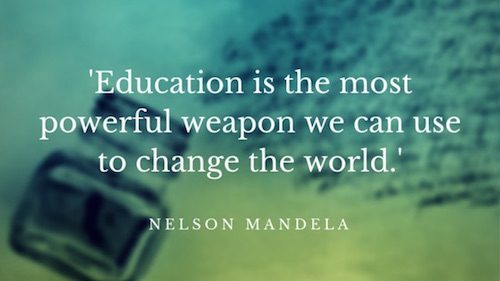The outdoors offers “unique opportunities” for learning in the early years, which may not be available indoors (Cable et al., 2010, p.227). Dr Tim Rudd (2008) states that teachers should focus on using places outside of the classroom for teaching and learning, as this provides for more meaningful learning through direct experience with the outside world. Outdoor learning can take place in a range of settings including my placement; College Settlement Camp Outdoor School (Learning and Teaching Scotland, 2010).
Outdoor learning environments, such as the Outdoor School, allow children to develop many skills. Learning outdoors provides children with the opportunity to develop their communication and language skills (Play Notes, 2009). All aspects of language are explored on a larger scale outdoors, as this gives children the chance to experiment and develop their literacy and language skills in a different context. Language learning in the outdoor environment, provides children with the opportunity to develop their communication skills, as they can explore their range of talking and listening skills, as they shout across the playground to one another. Furthermore, giving children the chance to develop their literacy and language skills outside, in an enriching environment, allows them to build their confidence and self-esteem. Therefore, when the children go to write, communicate or listen, when they are back in the classroom, they will be more confident to take inspiration from the outside environment (Knight, 2009). For example, sometimes children need the chance to explore their imagination before creating a story, and one way to do this is by taking them outside or allowing them to reflect on previous outdoor experiences. Thus, allowing them to discover descriptive language for themselves (Knight, 2009).
The Outdoor School at College Settlement also allows children to expand their scientific knowledge by gaining hands on experience. Some of the science lessons which the children experience includes; animal adaptations, Pennypack farm, survival, aquatic studies and archaeology. In these lessons, the children are taught the knowledge through hands on experience. For example, when children are learning about animal adaptations they are handling the animals and getting to see them in person and experience their traits. Furthermore, when learning about survival the children go on to create their own shelter in the woods using trees, branches, sticks, mud and leaves. Moreover, when exploring Pennypack farm, the children get to talk to the people who own and work on the farm, get to see the crops growing in their natural environment and also get to sample crops such as; lettuce, rocket, carrots and kale. Giving children the opportunity to experience hands-on lessons, allows them to test their own ideas and build their own understanding (Ewers, 2001). Hands-on experience learning is also more enjoyable and therefore there is more chance that the children will retain the information and remember the lesson, if they are having fun (Hodson, 1990).
Although all children benefit from an outdoor education, research shows that boys benefit more from outdoor learning in comparison to girls. Hutt (1989) and Cullen (1983) state that boys find it harder to concentrate inside the classroom. As stated by Riley (2008) however, a curriculum which promotes outdoor learning from an early age, allows boys to develop their language skills, concentration and confidence in an environment which is comfortable to them. Play Notes (2009) supports this by saying that many boys appear to “find their voice when they are engaged with more physical, active learning outdoors.” This is something which has been evident within my placement. Boys who have visited the Outdoor School on school trips have been extremely enthusiastic and have thoroughly enjoyed the hands-on experience which they have gained. From talking with the teachers, they explained how it is a massive difference in the boys’ concentration, learning and educational experience.
Furthermore, as stated by Play Notes (2009) children learn best through activities and experiences which engages all the senses and the outdoor environment can provide more freedom and space to engage in creative activities such as music, dance, rhymes and songs. These activities take place daily at Outdoor School, at the campfire or at meal entertainment. Thus, when at Outdoor School, the children have the opportunity to explore their creativity and increase their confidence in these areas.
In conclusion, outdoor learning provides children with the opportunity to develop their creative skills, imagination, language skills, confidence and self-esteem. It is important that children have the opportunity to develop these skills in a relaxed, enjoyable outdoor environment, as when they are back in the classroom they feel comfortable in expressing themselves and further develop their knowledge and skill set.
References
Cable, C., Miller, L. and Goodliff, G. (2010). Supporting Children’s Learning in the Early Years. 2nd ed. Oxon: Routledge, pp.110, 115-116, 226-227.
Ewers, T. (2001). Teacher-directed versus learning cycles methods: Effects on science process skills mastery and teacher efficacy among elementary education students. University of Idaho.
Hodson, D. (1990). A critical look at practical work in school science, pp. 33-40.
Knight, S. (2009). Forest Schools and Outdoor Learning in the Early Years. Los Angeles: SAGE, pp. 46-47.
Play Notes. (2009). Taking it Outdoors: Communication, Language and Literacy. [ebook] Early Years Outdoors, pp.1-4. Available at: http://outdoormatters.co.uk/wp-content/uploads/2011/03/Playnotes-Taking-it-outdoors-communication-language-and-literacy-Sept-091287133617.pdf [Accessed 25 Nov. 2017].
Riley, J. (2003). Learning in the Early Years: A guide for teachers of children 3-7. London: Paul Chapman Educational Publishing, pp.77, 191-193.
Rudd, D. (2008). Reimagining Outdoor Learning Spaces; Primary Capital, Co-design and Educational Transformation. Bristol: Futurelab, pp.26-40.

